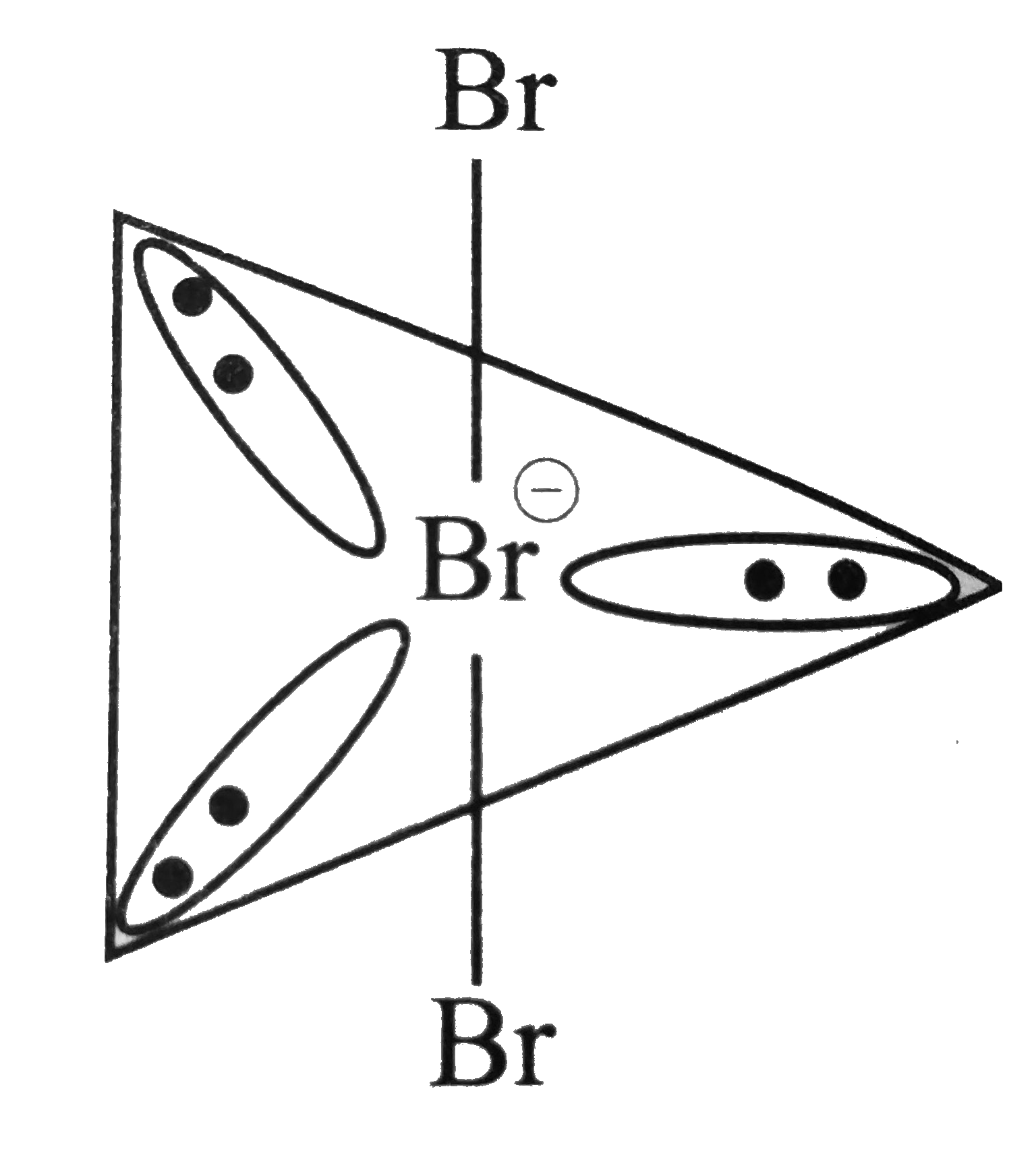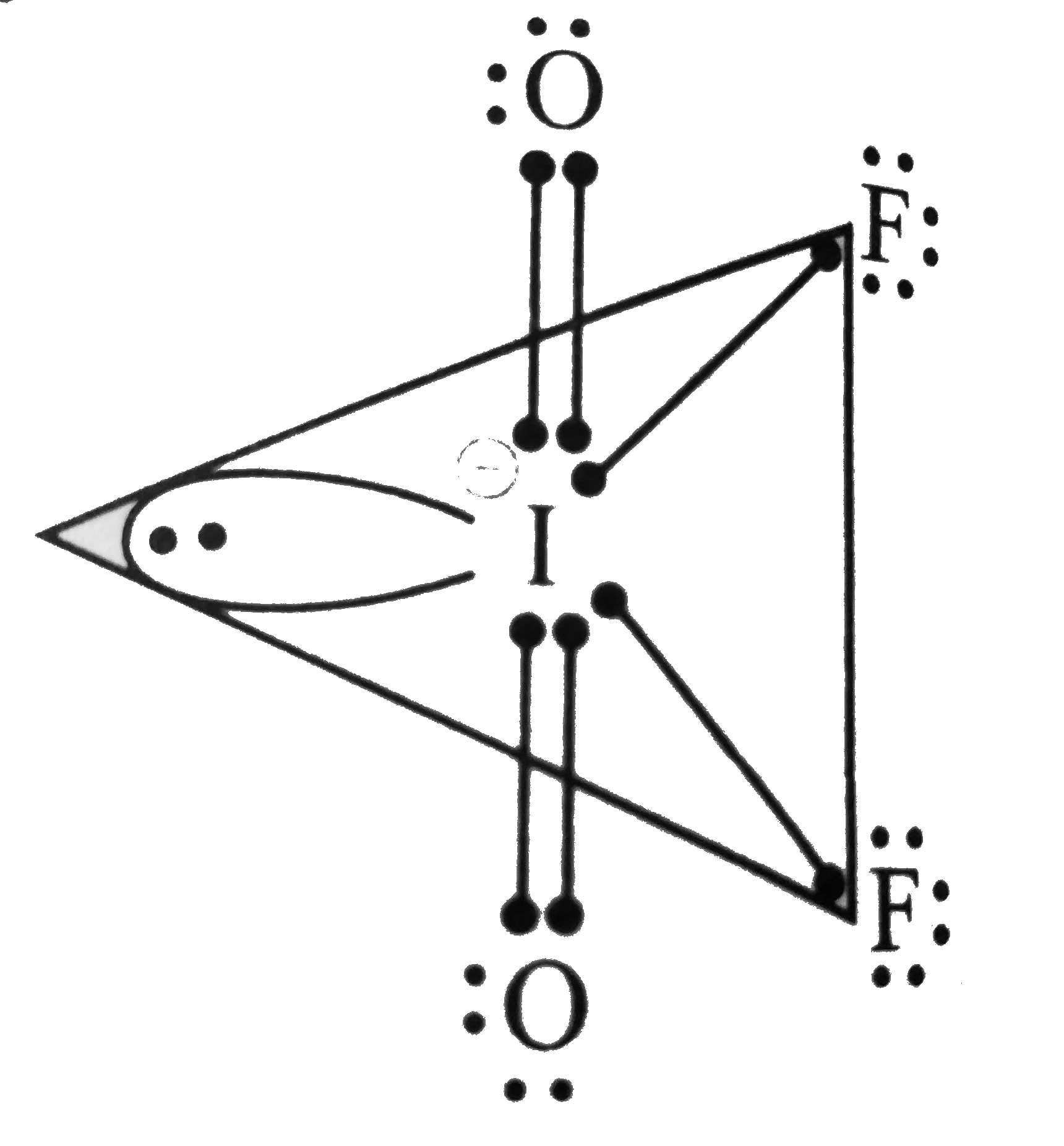Reduce the hybridisation, geometry and shape of the following
(i) CH2+2 (ii) BrΘ3 (iii) CIO⊕3
(iv) F2SeO (v) IO2FΘ2
Either of the hybridisation (i) sp2 and (ii) sp3d2 of a central atom can lead to a squar planar molecule Give one example of each .
Video Solution
Text Solution
CH2+2
H=12(V+M - no. of + ve charge)
=12(4+2−2)=2=sp
The molecule is linear. There will be no multiple bonding since H-atoms have no orbitals available and C-atom has lost the extra electrons
H=12(V+M+ on . of -ve charge)
=12(7+2+1)
=5=sp3d=Tbp
BrΘ3 has Tbp geometry but due to the presence of three lp's it is linear in shape
(iii) C1O⊕3::O..=⊕C1∣∣:O..=..O:
H=112(V+M - no of +ve charge)
12(7+0−1)=3=sp2= planar
CIO⊕3 is unstable ion, (CI=O) bonding is expected
H=12(V+M)=12(6+2)=4=sp3=TH
FeSeO has terahedral geometry but due to the presence of one lp it has pyramidal in shape This structure is analogous
(v) IO2FΘ2
H=12(V+M+ no. of -ve charge)
12(7+2+1)=5=sp3d
It has sp3d hybridisation with Tbp geometry but due to the presence of one lp of e− it has see-saw shape
(b) [Ni(CN)4]2−]
(ii) :..XeF4


|
Updated on:21/07/2023
Topper's Solved these Questions
- BOOK - CENGAGE CHEMISTRYCHAPTER - CHEMICAL BONDING AND MOLECULAR STRUCTUREEXERCISE - Ex 2 .2 Subjective (Intermolecular Forces And H-Bonding)7videos
CHEMICAL BONDING AND MOLECULAR STRUCTURE
- BOOK - CENGAGE CHEMISTRYCHAPTER - CHEMICAL BONDING AND MOLECULAR STRUCTUREEXERCISE - Ex 2 .2 Subjective (Molecular Orbital Theory)4videos
CHEMICAL BONDING AND MOLECULAR STRUCTURE
- BOOK - CENGAGE CHEMISTRYCHAPTER - CHEMICAL BONDING AND MOLECULAR STRUCTUREEXERCISE - Archives Subjective15videos
CHEMICAL BONDING AND MOLECULAR STRUCTURE
- BOOK - CENGAGE CHEMISTRYCHAPTER - ATOMIC STRUCTUREEXERCISE - Concept Applicationexercise(4.3)19videos
ATOMIC STRUCTURE
- BOOK - CENGAGE CHEMISTRYCHAPTER - CHEMICAL EQUILIBRIUMEXERCISE - Archives (Subjective)11videos
CHEMICAL EQUILIBRIUM
Similar Questions
Knowledge Check
- Question 1 - Select One
The hybridisation of Xe is sp3d2 in
AXeF2BXeO4CXeF4DXeO3 - Question 2 - Select One
Consider the following molecules or ions :
(i) CH2Cl2(ii)NH+4(iii)SO2−4(iv)ClO−4(v)NH3
sp3 hybridisation is involved in the formation ofA(i), (ii), (v) onlyB(i) , (ii) only sC(ii) onlyD(i), (ii), (iii), (iv) and (v) - Question 3 - Select One
The sp3d2 hybridization of central atom of molecule would lead to
Asquare planar geometryBtetrahedral geometryCtrigonal bipyramidal geometryDoctahedral geometry.
What is the type of hybridisation of each carbon in the following compounds ?
(i) CH3CH3
(ii) CH3CI
(iii) (CH3)2CO
(iv) CH3CNView SolutionHow many of the following compounds have sp3 hybridisation
(i) SO2−4 (ii) SO2−5 (iii) PO3−4 (iv) PO3−5
(v) IΘ3 (iv) CO2−3 (vii) CO2−4.View SolutionHybridisation (sp3d2, sp3d3) with examples
View SolutionWhich molecule is polar in each of the following pairs ?
(i) HF,F2 (ii) CO2,H2O
(iii) n2,NH3 (iv) CH4,CH3Cl.View SolutionGive hybridisation state of each carbon atom in the following molecules :
(i) CH3−CH=CH2
(ii) CH2=C=O
(iii) CH2=CHCN
(iv) HCONH2View Solution

